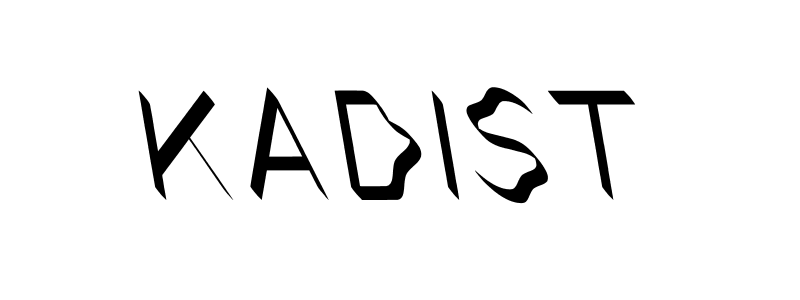Mythological Time
2016 - Film & Video (Film & Video)
12:44 minutes
Sun Xun
Sun Xun’s lushly illustrated, dynamic short film Mythological Time is a dreamy chronicle of rapacious industrial development, the mythical qualities of state propaganda, and the constancy of change, as experienced by an unnamed coal mining town. While it is not named in the film itself, the town at the center of Mythological Time is a re-imagined incarnation of Sun’s hometown of Fuxin, in the northern Chinese province of Liaoning. Sandwiched between North Korea and Inner Mongolia, Fuxin is a poor coal-mining region that used to contain one of China’s largest open-pit mines and has historically been the site of significant conflict, thanks to its rich mineral resources. In preparation to make the film, Sun, who is well known for his labor-intensive animation techniques and close attention to detail, spent over two weeks revisiting his hometown. Fuxin is cratered with sinkholes and blighted with cone-shaped spoil tips, much like the Fuxin depicted in Mythological Time. Unlike the real-life Fuxin, however, the Fuxin of the film is home to pheasants with human ears, bounding kirins, dragons that transform into trees, flying lumps of coal, and other chimerical beings; pangolins and fossils appear to be frozen in cubes of ice while old-fashioned cinemas project blank images onto nuclear power plants. The narrative of the film unfolds across two widescreen video images using a panoramic, scroll-like format, referencing the collapsed perspectives and flat narrative structure of Chinese landscape painting as mythological creatures both flee from and act as central characters within an alchemized, fantastical re-telling of a small town’s brutal path to modern industrialization. Borrowing frequently from the language of folklore as well as the visual strategies utilized by the Chinese Communist Party during Mao’s cult of personality, Sun’s work offers a palimpsest of official and oral histories to fill in the gaps carved out by state-administered amnesia. In Sun Xun’s world, time is a relentlessly transforming and transformable being, and the chronicle of human history is infinitely malleable. Human toil and industry exist in the realm of not just the mundane, but also the celestial.
Sun Xun creates videos and animation films from his meticulous, highly detailed, and often monochromatic, hand drawings executed in ink, oil, and crayon. Drawing on the ideas of thinkers like Karl Marx, Theodor Adorno, and Max Horkheimer, Sun investigates revolution, existence, mythologies of society, the notion of time, and the construction and narration of history. Often in a style of magical realism, Sun’s works are full of metaphors and indirect visual associations that beg to be deciphered.
Colors:
Related works featuring themes of: » Animals, » Animation, » China, » Collective History, » Chinese

© » KADIST
Chen Shaoxiong
2007After engaging primarily with video and photography for more than a decade, Chen turned to painting to explore the issue of urban change and memories—both personal and collective...

© » KADIST
Du Zhenjun
2010The Tower of Babel is an installation of large-format photographs that forces the audience to occupy a central position through its monumental scale...

© » KADIST
Pak Sheung Chuen
2008Pak created New York Public Library Projects (NYPLP) (2008) during a residency in New York, using public libraries as exhibition spaces and the books they house as raw materials...

© » KADIST
Chen Shaoxiong
2006After engaging primarily with video and photography for more than a decade, Chen turned to painting to explore the issue of urban change and memories—both personal and collective...

© » KADIST
Conrad Ruiz
2009It may take a minute to recognize the background of New Fall Lineup – the colors are tweaked into a world of cartoon and candy, and it is covered by leaping energetic figures and flying squirrels...

© » KADIST
Petra Cortright
2012In the flash animation SpringValle_ber_girls , Petra Cortright collages together surreal scenes out of unnaturally idyllic desktop screensavers with equally unreal computer-generated women that pop in and out of the landscape...

© » KADIST
Xiaoyun Chen
2006State Terrorism in the ultimate form of Pre-Raphaelite Brotherhood features a portrait of the artist wearing a zipped utilitarian jacket reminiscent of a worker’s uniform, with one arm behind his back as if forced to ingest a bundle of stick—a literal portrayal to the definition of fascism...

© » KADIST
Zhang Peili
2008In the video installation A Gust of Wind , Zhang continues to explore notions of perspective and melds them seamlessly with a veiled but incisive social critique...

© » KADIST
Chen Chieh-Jen
2010Empire’s Borders II – Passage and Empire’s Borders II – Workers are from the three-channel film installation Empire’s Borders II – Western Enterprise, Inc...

© » KADIST
Xiaoyun Chen
2006The image of rusted nails, nuts and bolts as shrapnel sandwiched between a fried Chicken burger highlights the contrast between decadence and destruction...

© » KADIST
Mark Leckey
2004In Made In Heaven , we are face to face with a sculptural apparition, a divine visitation in the artist’s studio...

© » KADIST
Qiu Anxiong
2011A Portrait: Covering and Cleaning is an installation of six black-and-white video projections...

© » KADIST
Chen Chieh-Jen
2010Empire’s Borders II – Passage and Empire’s Borders II – Workers are from the three-channel film installation Empire’s Borders II – Western Enterprise, Inc...

© » KADIST
Kwan Sheung Chi
2012Kwan Sheung Chi’s work One Million is a video work depicting the counting of bills...






